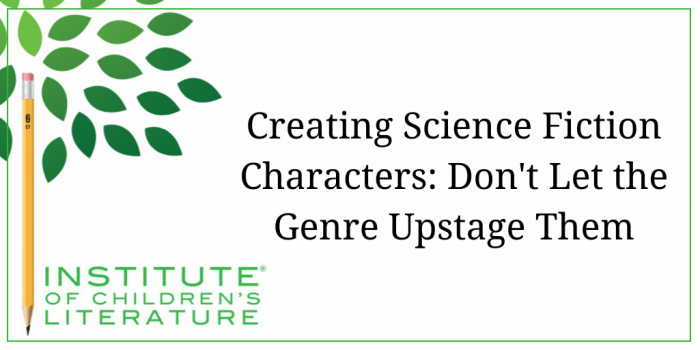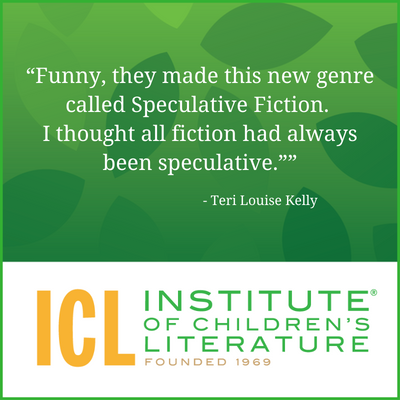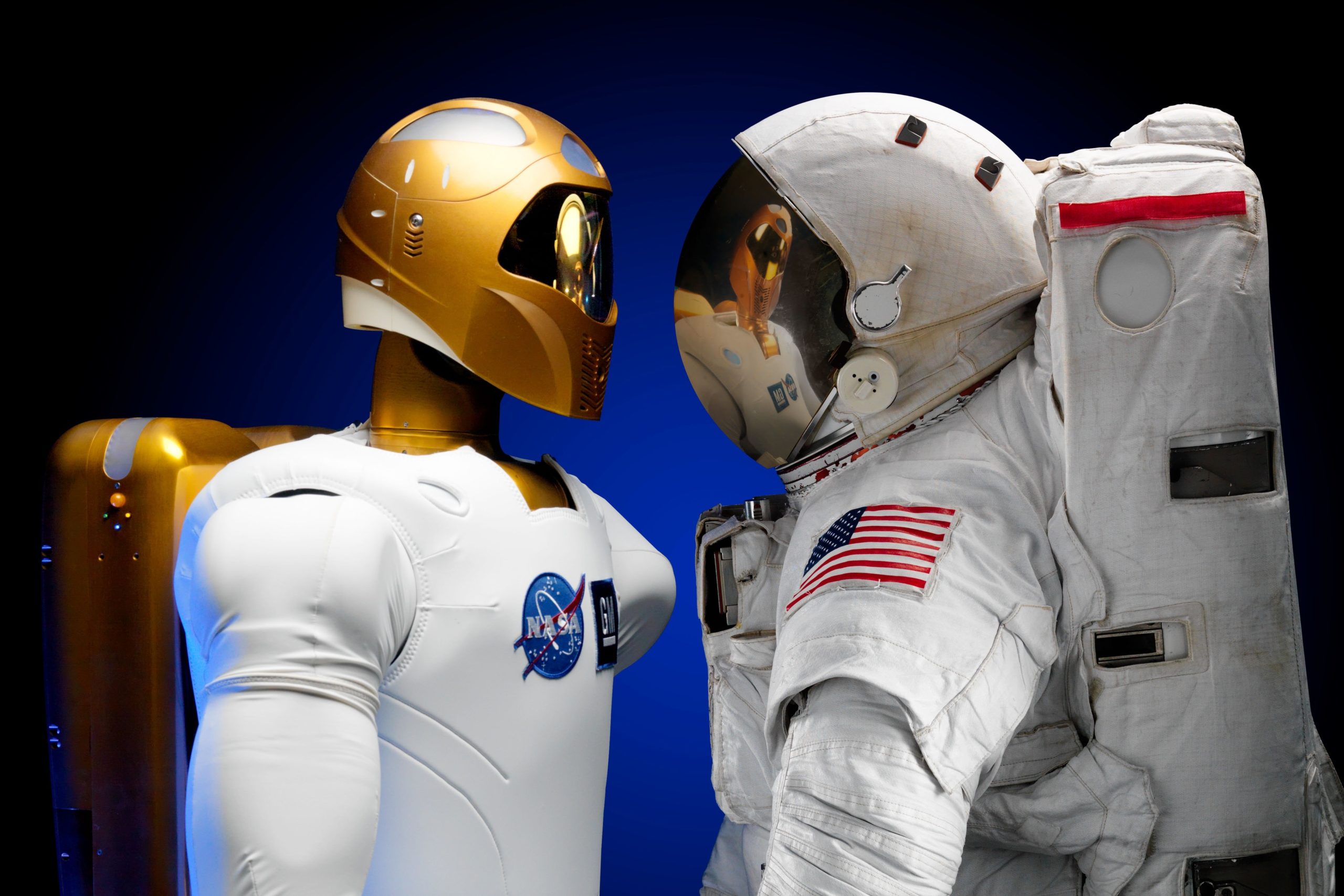1000 N. West Street #1200, Wilmington, DE 19801
© 2024 Direct Learning Systems, Inc. All rights reserved.

The genre of speculative fiction is filled with amazing things to catch the reader’s imagination: space ships, alien colonies, wizard schools, monsters and more. And science fiction is a subset of speculative fiction. As such, the genre becomes almost its own character as you decide its nature and its limits.
For many writers, the setting of science fiction can receive more attention than the living characters within it. As a result, science fiction characters are often accused of clichéd and one-dimensional. And sometimes that criticism isn’t entirely wrong. But we want to be sure it’s wrong when we write a children’s book or YA novel. As a result, our science fiction characters must be deeper and more engaging than the world around them, and that’s a tall order.
Science Fiction and Fantasy has a long tradition of creating archetypical characters that have been used so much they feel cliché. This is true even in young adult science fiction. The main science fiction character is often a kid who is called to greatness by destiny. This is the hero’s journey character who is called from “normal” life to something heroic. And this isn’t necessarily a bad thing. Many readers love the idea behind these hero’s journey characters, namely that we may each be a hero in waiting. The problem comes when the character is only the archetype and not something deeper and more relatable.
 Also, in the effort to make the hero’s journey to his destiny longer, writers can create really unlikable main characters who whine a lot. Luke Skywalker and Harry Potter both wasted a fair bit of time whining about their lot in life. And though both rose above that, it could make it harder to truly care about them. This has become so common that agents now frequently mention that they are interested in speculative fiction where the main character isn’t destined to greatness and isn’t answering the call. We need to go beyond the archetypes to create people to avoid this problem.
Also, in the effort to make the hero’s journey to his destiny longer, writers can create really unlikable main characters who whine a lot. Luke Skywalker and Harry Potter both wasted a fair bit of time whining about their lot in life. And though both rose above that, it could make it harder to truly care about them. This has become so common that agents now frequently mention that they are interested in speculative fiction where the main character isn’t destined to greatness and isn’t answering the call. We need to go beyond the archetypes to create people to avoid this problem.
One way to do that is to ensure that the seeds of what a science fiction character becomes are in the character from the beginning. So a character who has never had to face a life-threatening challenge may already show himself deeply loyal or willing to stand up to grief for the sake of someone else. Or he may simply be stubborn and unwilling to back down in a conflict. These small characteristics will help the reader care about the character’s challenges and struggles, because we feel the character is worthy of our concern.
The most common characteristics of main characters in speculative fiction tend to be a strong moral core (even if the morality that guides the character isn’t the morality that guides the rest of his society), loyalty, stubbornness and curiosity. These are traits that can propel the character into the action and keep him there. His moral code, for example, might be surprising or even funny. His stubbornness may get him into scrapes, but then his loyalty can build relationships that help get him out of scrapes too. Most really useful traits in a character have a double edge. They are good and they are bad depending on the situation. A trait that is unfailingly good will tend to flatten a character and make him less interesting. Perfect people are not only annoying, they tend to be dull.
The way such characteristics play out can make the character unique. And these traits strong double-edge traits can also be mixed with other less savory traits such as a tendency to lie or cheat or steal or engage in pranks. I wrote a book for a literacy program in which a main character is bright and wants to do something important, something of lasting value. That’s a drive that will enable him to meet the challenge of the story. Unfortunately he’s also bored, prone to resist authority, and very fond of pranks. The pranks he pulls are funny and do no real harm, thus helping to win over the reader early on. But ultimately those are traits that get him into trouble and result in catastrophe. He both brings on the story problem and ultimately is the only one with any chance of fixing it. He gets his heart’s desire, to do something important and of lasting value, but the cost to himself and others is brutal.
When you build your character, you must also keep in mind the setting of the story. Your main character runs the action, but he also guides the reader through the setting. The titular character of Cinder for example in the novel by Marissa Meyer is a mechanic and a cyborg. She has those elements because it helps the reader to learn quickly about this society. Cinder works on tech, which demonstrates tech to the reader. And Cinder is a cyborg to help the reader learn of this society where tech can both save a life and reduce that same life to second-class citizenry. As with the choices made in Cinder, your choices for your main character will help the world of the novel unfold for the reader.
 The world of a novel comes to life as the characters move through it. Mostly we don’t stop and scroll a long history of the situation by the reader via Star Wars (sometimes novels do, but in middle grade and YA, mostly they don’t because it’s a great way to lose reader interest.) Because readers don’t well tolerate long exposition, and because the world of science fiction is weird, we must come up with subtle ways to introduce it to the reader. In most instances, characters offer us that opportunity. They speak the language of the future. They pass through the streets (or stars) of the future. They use the tech and interact with the rules. They unfold the world for the reader by living in it. Because of that, the character creation must keep in mind that need. This character will need to move through this world in a way that helps the reader, so what does the character need to be in order to do that?
The world of a novel comes to life as the characters move through it. Mostly we don’t stop and scroll a long history of the situation by the reader via Star Wars (sometimes novels do, but in middle grade and YA, mostly they don’t because it’s a great way to lose reader interest.) Because readers don’t well tolerate long exposition, and because the world of science fiction is weird, we must come up with subtle ways to introduce it to the reader. In most instances, characters offer us that opportunity. They speak the language of the future. They pass through the streets (or stars) of the future. They use the tech and interact with the rules. They unfold the world for the reader by living in it. Because of that, the character creation must keep in mind that need. This character will need to move through this world in a way that helps the reader, so what does the character need to be in order to do that?
Using a character to bring the reader into your world also requires the writer to ask the question: how much does my reader really need to know here? The answer to that is “as much as will make the story work in a satisfying way.” In my chapter book, Lost in Space, the main character is a child who lives on a planet where his parents are mostly involved in work. To help the boy be less bored, his father gives him a prototype robot as a kind of babysitter.
Unfortunately the robot isn’t very good at the job and the boy’s boredom and curiosity get him into all kinds of humorous trouble. The gift of the robot and the ensuing adventure allow the reader to discover this strange world right along with the main character (who, up until now, has mostly been kept safe and sound inside). The reader doesn’t need to know how the colony got on this world, they only need to adventure in the world along with the main character, so the choices I made for the character were ones that propelled him out into the world.
So as you create your main characters, think about how they will hold their own against the world you’ve created. Give them enough reality to make them matter to the reader. Give them traits that make their job in the plot work. And then give them what they need to take the reader on an exciting journey into this world. Do that, and your science fiction will be engaging and memorable. And that is exactly what editors and agents want.
Let us help you develop characters with depth in one of our Signature Writing Courses! Get started today and take our assessment!
With over 100 books in publication, Jan Fields writes both chapter books for children and mystery novels for adults. She’s also known for a variety of experiences teaching writing, from one session SCBWI events to lengthier Highlights Foundation workshops to these blog posts for the Institute of Children’s Literature. As a former ICL instructor, Jan enjoys equipping writers for success in whatever way she can.
1000 N. West Street #1200, Wilmington, DE 19801
© 2024 Direct Learning Systems, Inc. All rights reserved.
1000 N. West Street #1200, Wilmington, DE 19801
© 2024 Direct Learning Systems, Inc. All rights reserved.
1000 N. West Street #1200, Wilmington, DE 19801
© 2024 Direct Learning Systems, Inc. All rights reserved.
1000 N. West Street #1200, Wilmington, DE 19801
© 2024 Direct Learning Systems, Inc. All rights reserved.

1000 N. West Street #1200, Wilmington, DE 19801
© 2025 Direct Learning Systems, Inc. All rights reserved.

1000 N. West Street #1200, Wilmington, DE 19801
©2025 Direct Learning Systems, Inc. All rights reserved. Privacy Policy.
4 Comments
i found the information given interesting. science fiction is only speculation, if the subject is something like, robots that turn into cars or planets that are also people. also science fiction is limited by the rules set by people who want their reality to be the definitive existence of the subject. star wars, isn’t the only science fiction universe out there. one example, buck rogers, a space cowboy was around since 1920 at least. another excellent example is flash gordon, his story was around since the existence of paper. both characters are really good examples of classic characters. i point this out, because star wars, as a book series came out before the movies. before star wars, another science fiction world existed, it housed things like time traveling bath tubs and electric submarines. while no one has ever successfully time traveled in a tub of any kind, many people have built small yet functional battery powered submarines.